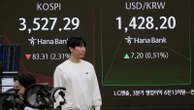In the 1960s, IBM embarked on what Fortune called the $5 billion gamble. It was a bet-the-company investment on a scale nobody had seen before. The payoff was the legendary System/360 mainframes, which revolutionized computing and set the stage for two decades of IBM dominance.
That $5 billion would be roughly the equivalent of $50 billion today, but even that princely sum is dwarfed by the $364 billion that tech giants are expected to invest in artificial intelligence this year. And the spending won’t stop there. McKinsey projects that building AI data centers alone could demand $5.2 trillion by 2030.
Today, the AI investment boom is probably the single biggest factor propping up the US economy. However, there is cause for concern. Throughout our history, great technological advances have led to overinvestment, the crowding out of traditional industries, and, eventually, a collapse triggering economic upheaval. Indicators suggest that’s where we’re headed now.
The booms and busts of railroad barons
In terms of economic impact, the closest comparison to the AI boom was the railroads in the 19th century. Then, like now, there was a revolutionary technology with unprecedented potential for impact. The railroads promised to connect production to markets like never before in human history.
Another striking parallel was government support and subsidy for investment. The Pacific Railroad Acts of 1862 and 1864 authorized vast land grants and the issue of government bonds to finance the construction of railroad infrastructure. These effectively guaranteed profits for private investors, while the public bore the risks.
Railroad barons such as Cornelius Vanderbilt, Jay Gould, and Leland Stanford made enormous fortunes and came to dominate the era. They created huge monopolies that stifled competition and squeezed farmers and small businesses. If the local railroad wouldn’t give you a rate, you couldn’t get your goods to market.
Greed, arrogance, and overinvestment fueled massive and repeated boom-and-bust cycles. The panics of 1873 and 1893 led to massive financial crises followed by years-long economic depressions and political instability. As historian Richard White explains in Railroaded, while eventually railroads would be valuable for America, the corruption, monopoly power, public cost, and repeated crashes were unnecessary and avoidable.
The Second Industrial Revolution
After the panic of 1893, hundreds of railroads went bankrupt, which created an opportunity for financiers like J.P. Morgan. As industries consolidated and competition decreased, stability returned and the Gilded Age roared back to life. The locus of power shifted to Wall Street as Morgan and his colleagues organized the American economy into great trusts like U.S. Steel.
It was in this environment that the Second Industrial Revolution took hold. Driven by technological breakthroughs in electricity and internal combustion in the 1880s, it fueled the emergence of entirely new industries, such as automobiles and radio. By the 1920s, the electrification of factories powered a productivity boom.
Much like today’s AI boom, the Second Industrial Revolution seemed to change everything. The confluence of electricity and internal combustion, along with the secondary innovations they spawned, led to mass manufacturing and mass marketing. Improved logistics reshaped supply chains and factories moved from cities in the north—close to customers—to small towns in the south, where labor and land were cheaper.
These genuine innovations and the resulting improvements in productivity, combined with lax regulation and easy credit, led to overinvestment and an enormous stock market bubble. The stock market crash of 1929, along with the poorly advised Smoot Hawley tariffs led to the Great Depression of the 1930s.
The pattern mirrored the railroad busts of the 1800s: Genuine innovation, poor government regulation, overinvestment, boom, and bust.
The dot-com boom and bust
I was working on Wall Street in 1995 when the Netscape IPO hit like a bombshell. It was the first big internet stock and, just like that, a tiny company with no profits was worth $2.9 billion. Soon, productivity growth—depressed since the early 1970s—began to surge. Economists explained that certain conditions, such as negligible marginal costs and network effects, would lead to “winner take all markets” and increasing returns to investment.
Companies such as Webvan and Pets.com, with no viable business plan or path to profitability, attracted hundreds of millions of dollars from investors. In a sign of the times, America Online (AOL), merged with Time Warner, the biggest and most prestigious media company on the planet to create a $350 billion megagiant that would straddle both the old and new worlds.
By 2000, the market peaked, the bubble burst, and the AOL–Time Warner merger became a cautionary tale. While some of the fledgling Internet companies, such as Cisco and Amazon, did turn out well, thousands of others went down in flames. Other more conventional businesses, such as Enron, WorldCom, and Arthur Anderson, got caught up in the hoopla, became mired in scandal, and went bankrupt.
Like the railroads and the Second Industrial Revolution, a bust followed a boom, but this time, there was no depression. While some prestigious companies failed, investors lost money, and genuine malfeasance was exposed, the Internet economy wasn’t quite big enough to pose a significant systemic risk. The recession that followed was relatively mild by historical standards.
Is this the perfect storm?
Looking at the AI boom from a historical perspective, the similarities to earlier technological cycles are striking. We see the same excitement, the same calls for government regulators to get out of the way and let the technological and market forces do their work. We also see the same pattern of massive overinvestment. The only part we haven’t seen is the bust . . . yet.
There are also signs that this particular cycle has the potential to be worse than anything in the living memory of anyone under the age of 100. As investor Paul Kedrosky points out, the size of investment in data center infrastructure has already surpassed that of the dot-com boom and is beginning to approach levels last seen during the railroad frenzy of the 19th century.
And for all the hype and hoopla, we’re not seeing much of a boost in productivity growth. A study by the St. Louis Fed suggests a 1.1% increase in aggregate worker productivity, with much of that concentrated in the tech sector. A paper by Nobel laureate Daron Acemoglu, looking at total factor productivity (TFP), a measure which takes use of capital into account, sees a 0.66% increase over 10 years, translating to a 0.064% increase in annual TFP growth.
Finally, there are signs of growing systemic risk. Kedrosky notes that, increasingly, tech giants are choosing to finance much of their infrastructure build-outs with Enron-like special purpose vehicles, which cost more but keep the debt off their balance sheets. That risk, in turn, is increasingly being passed to more traditional investors such as real estate investment trusts (REITs).
So, whether you like it or not, we’re all deeply invested in this AI boom and there will surely be rough waters ahead. We need capable governance if we’re going to navigate the rapids and not end up crashing on the rocks. Who, if anyone, is at the helm?








No comments